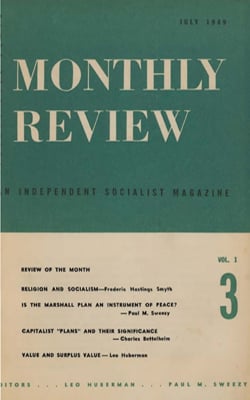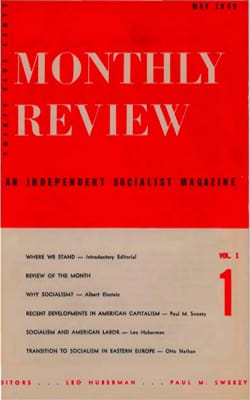The Hidden Structure of Violence: Who Benefits from Global Violence and War
$21.25 – $89.00
Acts of violence assume many forms: they may travel by the arc of a guided missile or in the language of an economic policy decision that contaminates drinking water, and they may leave behind a smoldering village or a starved child. The all-pervasive occurrence of violence makes it seem like an unavoidable, and ultimately incomprehensible, aspect of the human world, particularly in a modern era. But, in this detailed and expansive book, Marc Pilisuk and Jennifer Rountree demonstrate otherwise. Widespread violence, they argue, is in fact an expression of the underlying social order, and whether it is carried out by military forces or by patterns of investment, the aim is to strengthen that order for the benefit of the powerful.
The Hidden Structure of Violence marshals vast amounts of evidence to examine the costs of direct violence, including military preparedness and the social reverberations of war, alongside the costs of structural violence, expressed as poverty and chronic illness. It also documents the relatively small number of people and corporations responsible for facilitating the violent status quo, whether by setting the range of permissible discussion or benefiting directly as financiers and manufacturers. The result is a stunning indictment of our violent world and a powerful critique of the ways through which violence is reproduced on a daily basis, whether at the highest levels of the state or in the deepest recesses of the mind.
Because of its inter-disciplinary approach, The Hidden Structure of Violence will be valuable for scholars and students in a range of fields, but especially psychology, macro-economics, sociology, international relations, history, journalism, peace studies, military science, community development, and social change.
Bibliography for Hidden Structure of Violence
An encyclopedic and yet highly focused analysis of the causes and consequences of violence and wars … This is a sober book that nonetheless leaves us with hope for future generations.
—G. William Domhoff, Research Professor in Psychology and Sociology, University of California, Santa Cruz; author, Who Rules America?
One of the most comprehensive—and programmatic—discussions of the sources and nature of global violence in years.
—Tom Hayden, author, Inspiring Participatory Democracy
This is a rare book: It speaks the truth about the causes of war, and cuts through the veil of theories that mystify and obscure rather than explain the causes … a scholarly work, fully referenced and documented, yet accessible to the general public … a forthright and hard-hitting critique of the power elite’s control of government, foreign policy, and the media.
—Milton Schwebel, Emeritus Dean and Professor, Graduate School of Applied & Professional Psychology, Rutgers University; Founding Editor, Peace and Conflict: Journal of Peace Psychology; Former President, Psychologists for Social Responsibility
There are painful truths here for Americans about the role our government plays in perpetuating global violence—but some readers will be inspired to follow the authors’ advice on what can be done about it.
—William A. Gamson, Professor of Sociology, Boston University; author, Talking Politics and The Strategy of Social Protest
The authors have cast their net over the threats to world peace and ecological balance, pulling in not only fish but monsters of the deep. After painting a picture gloomier than any canvas by Bosch or Goya, they offer a glimmer of hope for a planet suffering from a life-threatening disease. Indeed, no recent book presents today’s pathologies so clearly nor provides potential remedies with such brilliant articulation.
—Stanley Krippner, Professor, Saybrook Graduate School; co-author, Haunted by Combat
This important book is a tour de force of erudition and scholarship, lucid exposition and organization, cogent reasoning, psychological depth, and compassionate motivation. It is written in clear, accessible language and a warm, humane voice. Each proposition is supported by well-documented evidence, including historical case studies. Through ‘uncovering a destructive system,’ the authors aspire to inform, inspire, and empower readers to take part in the just transformation of this violence-ravaged world. In other words, this book’s purpose is to empower activists for peace, human rights, and ecological sustainability. It is a guidebook to the intricate, highly organized networks that dominate and are destroying so much of the world in which we live.
—Mitch Hall, author, Peace Quest
In a few words, it can be said that the book tells it like it is—it describes the vast governmental-industrial-legislative complex that controls our lives via war and violence. This is not conspiracy theory any longer—it is rooted in fact and record. The authors cite names, organizations, places, and dates that not only promote war, but also benefit from it financially. The world is the victim! This is a must read and I call it to your attention.
—Anthony Marsella, editor, Amidst Peril and Pain: The Mental Health and Well-being of the World’s Refugees and Understanding Terrorism: Psychosocial Roots, Consequences, and Interventions
Marc Pilisuk teaches at Saybrook University and is Professor Emeritus of Human and Community Development at the University of California at Davis. He is a former president of the Society for the Study of Peace, Conflict, and Violence and a steering committee member of Psychologists for Social Responsibility. He has published ten books and more than 140 articles over an academic career spanning five decades.
Jennifer Rountree is research manager at the National Indian Child Welfare Association in Portland, Oregon. She has a PhD in psychology from Saybrook Graduate School and Research Center in San Francisco, California, and supports American Indian/Alaska Native tribes and urban Indian communities in community based participatory research.
Publication Date: July 2015
Number of Pages: 360
Paperback ISBN: 9781583675427
Cloth ISBN: 9781583675434
eBook ISBN: 9781583675441
Related products
-
Monthly Review Volume 2, Number 6 (October 1950) [PDF]
$10.00 Add to cart -
Monthly Review Volume 1, Number 11 (March 1950) [PDF]
$10.00 Add to cart -
Monthly Review Volume 1, Number 9 (January 1950) [PDF]
$10.00 Add to cart -
Monthly Review Volume 1, Number 3 (July 1949) [PDF]
$10.00 Add to cart -
Monthly Review Volume 1, Number 2 (June 1949) [PDF]
$10.00 Add to cart -
Monthly Review Volume 1, Number 1 (May 1949) [PDF]
$10.00 Add to cart

 [PDF].jpg)
 [PDF].jpg)
 [PDF].jpg)

 [PDF].jpg)
